nano-fertilizers products in some countries government have established a new legislation encouraging nanotechnology in agricultural fertilizers. This guideline and advantages and disadvantages should reduce urea use by 50% and increase agricultural output by 15%. Agriculture uses nanotechnology. By increasing the plant’s nutrient ratio, herbicides and fertilizers are needed less often, and product output grows. The Indian government may use nanotechnology in agriculture. The Central Fertilizer Committee said “Nano Nitrogen” is now available to Indian farmers, cutting urea imports. “We imported more than 9 million tons of urea last year,” the organization said. Nano products imported reduce imports.The approved law lasts for three years but may be extended after review. This new technology must not harm the environment or people. We’ll watch closely. ” After a one-year trial, this vegetable fertilizer regulator authorized nanotechnology. 500 ml of “Nano Nitrogen” is comparable to 50 tonnes of urea. India uses 35 million tons of urea but produces just 70% of it. Due to the government’s financial hardship due to the 70% fertilizer subsidy, The government has subsidized the commercialization of this nano product, and its financial burden has been reduced due to reduced urea use. IFFCo developed Nano nitrogen during a one-year research program in India. It’s IFFCo’s.  According to the manufacturer, a bottle of this chemical costs less than a bag of urea, reducing farmers’ costs. This patent-protected nano product is now monopolized by businesses. India is the world’s leading importer of urea and diammonium phosphate and wants to be self-sufficient by 2025. IFFCO India might save Rs 40,000 crore by producing nano-urea domestically. 30 nano meter urea nano particles have a 10,000 times greater surface area than granular urea. Nano urea’s tiny, rough surface helps plants absorb nutrients. Nano particles penetrate the plant and travel to nitrogen-deficient zones, where they release nutrients. More than 40 items were tested across 11,000 locations, and the results show that nano urea enhances product productivity and can lower regular urea use by 50%. Nano urea (liquid) improves a product’s nutrition, biomass, yield, and soil health. This nano urea has been tested for bio safety and toxicity according to Indian government requirements and OECD guidelines. IFFCO says this nano urea solution is safe for people, pets, wildlife, and the environment at acceptable levels. Nano Ore from IFFCO advances precision, smart, and sustainable agricultural and food systems. Improving soil, water, and fertilizer management can aid the agriculture sector. The Indian government focuses on liquid nanourea because it boosts crop growth and productivity and reduces fertilizer expenses for farmers. Nano urea is the only Indian-approved nano fertilizer. 50 kg of granular urea is equivalent to 500 ml of nano urea. Consequently, urea logistics costs have dropped. The liquid fertilizer market could reach $3 billion by 2025, expanding at 4.4% annually. Precision agriculture, a rise in demand for high-efficiency fertilizers, and the fact that liquid fertilizers are easy to use and apply will all help the market grow.
According to the manufacturer, a bottle of this chemical costs less than a bag of urea, reducing farmers’ costs. This patent-protected nano product is now monopolized by businesses. India is the world’s leading importer of urea and diammonium phosphate and wants to be self-sufficient by 2025. IFFCO India might save Rs 40,000 crore by producing nano-urea domestically. 30 nano meter urea nano particles have a 10,000 times greater surface area than granular urea. Nano urea’s tiny, rough surface helps plants absorb nutrients. Nano particles penetrate the plant and travel to nitrogen-deficient zones, where they release nutrients. More than 40 items were tested across 11,000 locations, and the results show that nano urea enhances product productivity and can lower regular urea use by 50%. Nano urea (liquid) improves a product’s nutrition, biomass, yield, and soil health. This nano urea has been tested for bio safety and toxicity according to Indian government requirements and OECD guidelines. IFFCO says this nano urea solution is safe for people, pets, wildlife, and the environment at acceptable levels. Nano Ore from IFFCO advances precision, smart, and sustainable agricultural and food systems. Improving soil, water, and fertilizer management can aid the agriculture sector. The Indian government focuses on liquid nanourea because it boosts crop growth and productivity and reduces fertilizer expenses for farmers. Nano urea is the only Indian-approved nano fertilizer. 50 kg of granular urea is equivalent to 500 ml of nano urea. Consequently, urea logistics costs have dropped. The liquid fertilizer market could reach $3 billion by 2025, expanding at 4.4% annually. Precision agriculture, a rise in demand for high-efficiency fertilizers, and the fact that liquid fertilizers are easy to use and apply will all help the market grow. Nano fertilizers Nano fertilizer product introduction Since the green revolution, intensive farming practices have been regarded as unsustainable because of low chemical efficacy because of low efficacy, especially with mineral fertilizers. Fertilizers increase agricultural yield and nutritional quality, especially with fertilizer-responsive crop varieties. Nitrogen is the most significant mineral nutrient for crop plants since it is a component of chlorophyll, proteins, and enzymes. Plants consume nitrate and ammonium (NH+4). Leaching, de-nitrification, and ammonia volatilization lose nitrogen. Mineral nutrient loss through leaching, runoff, and excessive volatilization causes economic and environmental damage. Conventional application procedures overdose chemical fertilizers, as indicated by eutrophication (algal growth on water bodies produced by nutrient-enriched water, limiting fish oxygen availability in several European and North American countries. Nitrogen volatilization emits nitrous oxides, which contribute to global warming. Modern profit-oriented farming systems use nitrogenous fertilizer at 45–50% efficiency and phosphorus at 10–25%. Ammonium ions react with alkaline rainwater to produce ammonia gas, which pollutes the atmosphere. Nitrates and ammonium ions gather in the leaves of crops, especially leafy vegetables, and are hazardous to human health. Nitrate-rich diets are connected to bladder, stomach, and methemoglobinemia. Active agents are given exactly where they’re needed. Environmentalists and consumers desire reduced synthetic fertilizer use to reduce agricultural damage and pollution. This helps maintain agroecosystems.
Nano fertilizers Nano fertilizer product introduction Since the green revolution, intensive farming practices have been regarded as unsustainable because of low chemical efficacy because of low efficacy, especially with mineral fertilizers. Fertilizers increase agricultural yield and nutritional quality, especially with fertilizer-responsive crop varieties. Nitrogen is the most significant mineral nutrient for crop plants since it is a component of chlorophyll, proteins, and enzymes. Plants consume nitrate and ammonium (NH+4). Leaching, de-nitrification, and ammonia volatilization lose nitrogen. Mineral nutrient loss through leaching, runoff, and excessive volatilization causes economic and environmental damage. Conventional application procedures overdose chemical fertilizers, as indicated by eutrophication (algal growth on water bodies produced by nutrient-enriched water, limiting fish oxygen availability in several European and North American countries. Nitrogen volatilization emits nitrous oxides, which contribute to global warming. Modern profit-oriented farming systems use nitrogenous fertilizer at 45–50% efficiency and phosphorus at 10–25%. Ammonium ions react with alkaline rainwater to produce ammonia gas, which pollutes the atmosphere. Nitrates and ammonium ions gather in the leaves of crops, especially leafy vegetables, and are hazardous to human health. Nitrate-rich diets are connected to bladder, stomach, and methemoglobinemia. Active agents are given exactly where they’re needed. Environmentalists and consumers desire reduced synthetic fertilizer use to reduce agricultural damage and pollution. This helps maintain agroecosystems. Modern intensive agriculture is a promising topic that could provide long-term solutions to urgent concerns. This small scale affords nano materials unique features and benefits. High surface area allows nano particles to interact more effectively with target locations. Without compromising crop yield, nano fertilizers can address plant nutrition needs and bring sustainability to crop production systems. This chapter consolidates and reviews the current state and advancements in nano fertilizers and piques interest in further research. The goal is to synthesize and evaluate the role of nano fertilizers in increasing nutrient uptake and use efficiency, reducing leaching and gaseous emissions, and lowering nutrient toxicity to ensure food security through increased productivity and economic output through sustainable farming practices. This chapter discusses nanotechnology’s role in modern farming; its potential in developing smart fertilizers; nano fertilizers and their formulations; the biological mechanism of nano fertilizers in plants; the many benefits of nano fertilizers; and field evidence of nano particles’ superior performance in imparting critical characteristics to crop plants, leading to higher productivity. Finally, certain issues with employing nano particles as plant food have been discussed. India’s nanotechnology India’s nanotechnology India’s research and technological breakthroughs led to the creation of nano science. In recent years, many nano science and nanotechnology courses have emerged.
Modern intensive agriculture is a promising topic that could provide long-term solutions to urgent concerns. This small scale affords nano materials unique features and benefits. High surface area allows nano particles to interact more effectively with target locations. Without compromising crop yield, nano fertilizers can address plant nutrition needs and bring sustainability to crop production systems. This chapter consolidates and reviews the current state and advancements in nano fertilizers and piques interest in further research. The goal is to synthesize and evaluate the role of nano fertilizers in increasing nutrient uptake and use efficiency, reducing leaching and gaseous emissions, and lowering nutrient toxicity to ensure food security through increased productivity and economic output through sustainable farming practices. This chapter discusses nanotechnology’s role in modern farming; its potential in developing smart fertilizers; nano fertilizers and their formulations; the biological mechanism of nano fertilizers in plants; the many benefits of nano fertilizers; and field evidence of nano particles’ superior performance in imparting critical characteristics to crop plants, leading to higher productivity. Finally, certain issues with employing nano particles as plant food have been discussed. India’s nanotechnology India’s nanotechnology India’s research and technological breakthroughs led to the creation of nano science. In recent years, many nano science and nanotechnology courses have emerged.  Universities and other educational institutions in India have developed bachelor’s, master’s, and research programs in nano science and nanotechnology. Most Indian nano science courses are developed in physics, chemistry, biological science, and engineering departments. First came nano science and nanotechnology. Universities began offering fully-developed programs after receiving authorization from higher authorities. Few academic institutions have nano science and nanotechnology research programs. Some institutions have their own departments or centers, while others have incorporated them. Before a decade ago, many universities lacked the infrastructure for nano science and nanotechnology programs. Teachers from basic scientific and technical disciplines are helping students in their fields. Few educational institutions have hired permanent teaching faculties to administer special or innovative centers or centers of excellence programs (CoEs). Some institutions have nano science and nanotechnology programs with overseas universities. Students must spend one or two semesters abroad to fulfill these requirements. So, universities and other institutions provide PhD programs and self-guided courses. The Indian government has supported several nano science and nanotechnology endeavors by: DBT, ICMR, and MeitY’s CoE in Nano electronics sponsor nano science, nanotechnology, and nano biotechnology programs. In India, the Department of Science and Technology has developed 18 SAIFs, which play a significant role in the advanced characterization and synthesis of nano-materials for various purposes. The Center of Excellence in Nano science and Nanotechnology was set up by the DST-Nan omission to help researchers and graduate students.
Universities and other educational institutions in India have developed bachelor’s, master’s, and research programs in nano science and nanotechnology. Most Indian nano science courses are developed in physics, chemistry, biological science, and engineering departments. First came nano science and nanotechnology. Universities began offering fully-developed programs after receiving authorization from higher authorities. Few academic institutions have nano science and nanotechnology research programs. Some institutions have their own departments or centers, while others have incorporated them. Before a decade ago, many universities lacked the infrastructure for nano science and nanotechnology programs. Teachers from basic scientific and technical disciplines are helping students in their fields. Few educational institutions have hired permanent teaching faculties to administer special or innovative centers or centers of excellence programs (CoEs). Some institutions have nano science and nanotechnology programs with overseas universities. Students must spend one or two semesters abroad to fulfill these requirements. So, universities and other institutions provide PhD programs and self-guided courses. The Indian government has supported several nano science and nanotechnology endeavors by: DBT, ICMR, and MeitY’s CoE in Nano electronics sponsor nano science, nanotechnology, and nano biotechnology programs. In India, the Department of Science and Technology has developed 18 SAIFs, which play a significant role in the advanced characterization and synthesis of nano-materials for various purposes. The Center of Excellence in Nano science and Nanotechnology was set up by the DST-Nan omission to help researchers and graduate students.  advantages and disadvantages nano On the one hand, the ever-increasing human population and the need for more food; and the loss of arable land and its fertility, on the other hand, have forced mankind to use more chemical fertilizers. This is because of the interplay between these two factors. Some calcareous soils around the world have an alkaline pH, a low amount of organic matter, or a coarse texture, all of which contribute to a reduced availability of low-consumption nutrients. In an effort to cut expenses and lessen our impact on the environment, researchers are looking at the potential of emerging technologies to boost the effectiveness of the consumption of scarce food ingredients and to cut back on the quantity of fertilizer that is used. In this regard, nanotechnology has been able to change the properties of fertilizers, which gives researchers hope that they will eventually achieve fertilizers with higher consumption efficiency, which will lead to a reduction in the amount of fertilizers used and a lessening of the risks they pose to the environment. nano materials. There have been many different nano materials employed as fertilizers for plants, the majority of which have been utilized in greenhouses and artificial culture beds. There have been reports of the beneficial effects that nano fertilizers containing iron, zinc, manganese, copper, and molybdenum have had on the development indicators of various plants, including wheat, canola, sorghum, beans, cucumbers, tomatoes, peanuts, and even some medicinal plants. On the other hand, the studies detail a number of instances in which nano codes had neither a positive nor a negative effect; these instances should not be disregarded.
advantages and disadvantages nano On the one hand, the ever-increasing human population and the need for more food; and the loss of arable land and its fertility, on the other hand, have forced mankind to use more chemical fertilizers. This is because of the interplay between these two factors. Some calcareous soils around the world have an alkaline pH, a low amount of organic matter, or a coarse texture, all of which contribute to a reduced availability of low-consumption nutrients. In an effort to cut expenses and lessen our impact on the environment, researchers are looking at the potential of emerging technologies to boost the effectiveness of the consumption of scarce food ingredients and to cut back on the quantity of fertilizer that is used. In this regard, nanotechnology has been able to change the properties of fertilizers, which gives researchers hope that they will eventually achieve fertilizers with higher consumption efficiency, which will lead to a reduction in the amount of fertilizers used and a lessening of the risks they pose to the environment. nano materials. There have been many different nano materials employed as fertilizers for plants, the majority of which have been utilized in greenhouses and artificial culture beds. There have been reports of the beneficial effects that nano fertilizers containing iron, zinc, manganese, copper, and molybdenum have had on the development indicators of various plants, including wheat, canola, sorghum, beans, cucumbers, tomatoes, peanuts, and even some medicinal plants. On the other hand, the studies detail a number of instances in which nano codes had neither a positive nor a negative effect; these instances should not be disregarded.  In addition, the implications of discharging such a large quantity of these compounds into the environment by means of fertilization are not well understood, and the results of their introduction into the food chain are a matter of contention. So, it looks like more research is needed to make the best fertilizer. What does the term “nano fertilizer” mean? What is a nano-fertilizer, and what are some of its applications? What exactly is meant by the term “nano-fertilizer” and how can it be utilized in the field of agriculture? In other words, nano fertilizer is an alternative to chemical fertilizers; it is a new technology that improves plant nutrition and has the potential to have many positive effects on agricultural land. Stay with us until the end of this article to learn more about nano-fertilizers, including their advantages as well as the mechanism that underlies the different kinds. Nano fertilizers and environmentally responsible farming: With the help of sustainable agriculture, farmers can increase crop yields and improve food security at the same time. The production of food is a worry for many nations in today’s world as a result of the challenges that have been caused by climate change, population increase, a reduction in arable land, and a reduction in available water resources. These issues have influenced the production of food in today’s world.
In addition, the implications of discharging such a large quantity of these compounds into the environment by means of fertilization are not well understood, and the results of their introduction into the food chain are a matter of contention. So, it looks like more research is needed to make the best fertilizer. What does the term “nano fertilizer” mean? What is a nano-fertilizer, and what are some of its applications? What exactly is meant by the term “nano-fertilizer” and how can it be utilized in the field of agriculture? In other words, nano fertilizer is an alternative to chemical fertilizers; it is a new technology that improves plant nutrition and has the potential to have many positive effects on agricultural land. Stay with us until the end of this article to learn more about nano-fertilizers, including their advantages as well as the mechanism that underlies the different kinds. Nano fertilizers and environmentally responsible farming: With the help of sustainable agriculture, farmers can increase crop yields and improve food security at the same time. The production of food is a worry for many nations in today’s world as a result of the challenges that have been caused by climate change, population increase, a reduction in arable land, and a reduction in available water resources. These issues have influenced the production of food in today’s world. Naturally, farmers have been able to overcome these challenges to a certain extent and boost the production of their agricultural products as a result of the use of innovative and contemporary agricultural practices. In fact, the wrong and too much use of chemical fertilizers in agriculture is one of the main reasons why they are used more now than they were in the past. Because using chemical fertilizers on farmland is something that should be avoided as much as possible. It may be difficult to believe, but the total amount of synthetic and chemical fertilizers produced in the world in the year 2022 alone was almost 188 million tons. This is in spite of the fact that there have only been about 4 million tons of pesticides used anywhere in the world up until this point. It is anticipated that the global population will rise to 9.6 billion by the year 2050, at which point there will also be an increase in the amount of artificial and chemical fertilizers that are used. However, you are undoubtedly asking yourself, “What are the benefits and drawbacks of using artificial fertilizers, and why should we consider finding an alternative to them?” Artificial fertilizers have a number of benefits and drawbacks. You know that synthetic and chemical fertilizers are used to help agricultural products grow and make as much as possible. However, these fertilizers are not able to play an effective role in boosting the amount of nutrients absorbed by the plant, the quantity of nutrients utilized by the plant, or the number of crops produced. The amount of nitrogen, phosphorous, and potassium in these fertilizers isn’t enough, and photolysis, hydrolysis, and microbial decomposition in the soil keep them from getting where they need to go.
Naturally, farmers have been able to overcome these challenges to a certain extent and boost the production of their agricultural products as a result of the use of innovative and contemporary agricultural practices. In fact, the wrong and too much use of chemical fertilizers in agriculture is one of the main reasons why they are used more now than they were in the past. Because using chemical fertilizers on farmland is something that should be avoided as much as possible. It may be difficult to believe, but the total amount of synthetic and chemical fertilizers produced in the world in the year 2022 alone was almost 188 million tons. This is in spite of the fact that there have only been about 4 million tons of pesticides used anywhere in the world up until this point. It is anticipated that the global population will rise to 9.6 billion by the year 2050, at which point there will also be an increase in the amount of artificial and chemical fertilizers that are used. However, you are undoubtedly asking yourself, “What are the benefits and drawbacks of using artificial fertilizers, and why should we consider finding an alternative to them?” Artificial fertilizers have a number of benefits and drawbacks. You know that synthetic and chemical fertilizers are used to help agricultural products grow and make as much as possible. However, these fertilizers are not able to play an effective role in boosting the amount of nutrients absorbed by the plant, the quantity of nutrients utilized by the plant, or the number of crops produced. The amount of nitrogen, phosphorous, and potassium in these fertilizers isn’t enough, and photolysis, hydrolysis, and microbial decomposition in the soil keep them from getting where they need to go. Because of these factors, farmers are compelled to incorporate a greater quantity of these fertilizers into the soil of their farms before planting each crop. In addition to doing a lot of damage to the environment, using these fertilizers can make problems like air pollution, soil erosion, and water contamination much worse. Due to these factors, we must refrain from using fertilizers of this kind in agricultural settings. On the other hand, nano fertilizers have emerged as the most promising artificial and chemical fertilizer substitutes. Nanotechnology has been used to develop nano fertilizers, which have proven to be useful for use in agricultural settings. These nano fertilizers have been able to play an important part in the industry. In a nutshell, nano fertilizers are nano materials that are able to carry both large and small plant nutrients and efficiently distribute them to the plant. These nano-fertilizers have very good stability in the soil and can transport nutrients to the roots of plants in a slow and gentle manner.
Because of these factors, farmers are compelled to incorporate a greater quantity of these fertilizers into the soil of their farms before planting each crop. In addition to doing a lot of damage to the environment, using these fertilizers can make problems like air pollution, soil erosion, and water contamination much worse. Due to these factors, we must refrain from using fertilizers of this kind in agricultural settings. On the other hand, nano fertilizers have emerged as the most promising artificial and chemical fertilizer substitutes. Nanotechnology has been used to develop nano fertilizers, which have proven to be useful for use in agricultural settings. These nano fertilizers have been able to play an important part in the industry. In a nutshell, nano fertilizers are nano materials that are able to carry both large and small plant nutrients and efficiently distribute them to the plant. These nano-fertilizers have very good stability in the soil and can transport nutrients to the roots of plants in a slow and gentle manner.

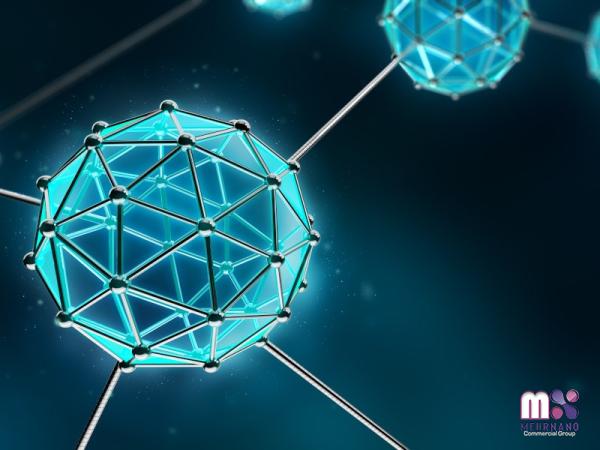
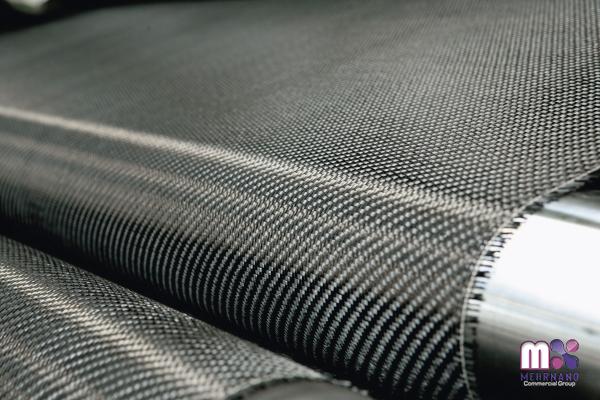

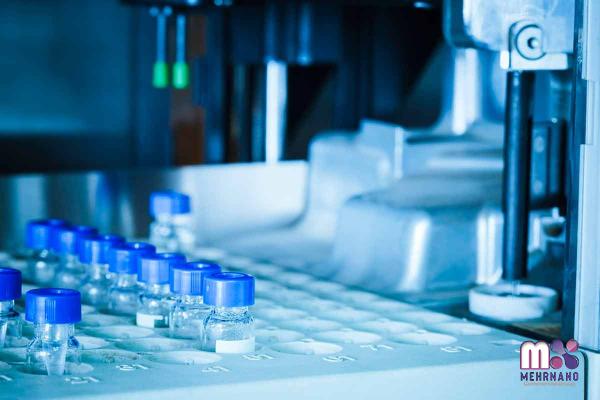



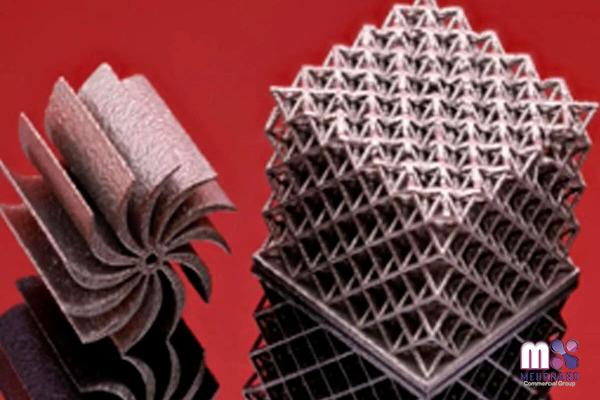
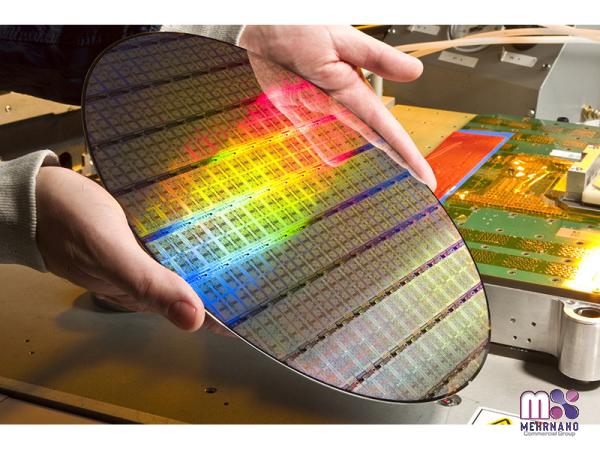

Your comment submitted.